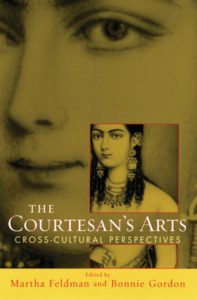
Cover image from oupcanada.com
From the Introduction: “Given their well-established socioeconomic as well as musical moorings, why did the courtesan’s art and agency disappear [after India’s purity/anti-nautch movement] rather than metamorphose into a different practice, just as the salons themselves had emerged from court performances? In other words, how viable was these women’s agency? Did Indian courtesans need courts for their art to survive? True, the salon successfully replaced the court. But did its courtly ritual require the validating presence of courts and aristocratic patronage? Could the courtesans’ art not be transplanted onto the concert stage, like the classical art of the male singers who were their masters? Or was the barrier to bourgeois respectability insurmountable for these women? Was it the official condemnation of courtesans’ morals and their banishment from government patronage at All India Radio that erased their art? Or did their music not measure up to the reformist canon of classical music? Under what conditions did a very few exceptional courtesans continue to perform on the public concert stage, and to what musical effect? ”
Burckhardt Qureshi asks many other insightful questions in her introduction. Put as succinctly as possible (at the risk of obscuring the chapter’s complexity), Burckhardt Qureshi aims to identify which social and musical conditions courtesans were able to transcence before the practice as outlawed, to question the viability of courtesans’ agency and independence within patrilineal/patriarchal Indian society but without feudal (and male) patronage, and to explore whether courtesans could and can produce and reproduce themselves as professional musical performers.
